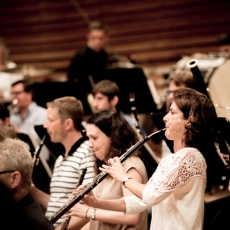Stravinsky - COE - Audiophile Audition
These two works represent some of the most normally tonal and neoclassical works of the composer. I had frankly paid little attention to Apollon musagète previously, but this energetic performance in glorious surround sonics of the work felt to be the apogee of Stravinsky's neoclassicism has won me over. For string orchestra, it uses almost entirely diatonic harmony, with none of the odd chromaticism of much Stravinsky. He intended to create a sense of classical order as symbolized by the Greek god Apollo, and the result is a perfect union of music and dance. But past the general musical evocation of ancient Greece is something deeper and more serious as well.
We recently reviewed the complete Pulcinella of Stravinsky, with the vocal soloists. But as I lean more toward instrumental music, I prefer the usual 11-piece suite version - especially in the sparkling and inspired performance here by one of the world's finest chamber orchestras. They have won a Grammy and three Gramophon "Record of the Year" awards, and deserve them. Stravinsky didn't change the original music (once thought erroneously to be by Pergolesi) much at all in some of the pieces, whereas in others his voice is quite strong and readily identified. But by the two-minute finale, everything is transformed considerably, over an echt-Stravinsky rhythmical base. This is a rich and full-sounding piece; in their note booklet panoramic photo the orchestra seems very sizable - not a tiny chamber group by any means.
From Audiophile Audition

